Health
Genetics & Genomics Research Dissemination; Makerere Bioethicists Emphasize the Importance of Community Engagement
Published
3 years agoon
By
Mak Editor
By Joseph Odoi
As Genetics research continues growing in Uganda, Bioethicists from Makerere University College of Health Sciences have stressed the importance of community engagement, genetic counselling and Public sensitization when conducting Genetics research in Uganda.
These recommendations were made at a research dissemination workshop held on the 8th December 2022 at Makerere University College of Health Sciences.
While presenting findings of the ELSI-UG project titled “Ethical and social issues in informed consentprocesses in African genomic research”, the Project Principal Investigator -Associate Professor Mwaka Erisa Sabakaki from College of Health Sciences, Makerere University in a special way welcomed participants to the dissemination. He noted that involving communities in genetics and genomics research is very important when it comes to enhancing the understanding of genetics and genomic information by the general public.
‘’There has been an exponential increase in genetics and genomic research in the last two decades.
However, this field of research is complex and is poorly understood by various research stakeholders. One way of enhancing understanding of genetics and genomic information by the general public is through community engagement. It is therefore crucial that communities are meaningfully involved in research processes right from conception. Community engagement provides a two-way communication channel through which researchers gain better understanding of community priorities, preferences, traditions, practices, and cultural sensitivities.’’ explained Prof. Mwaka.
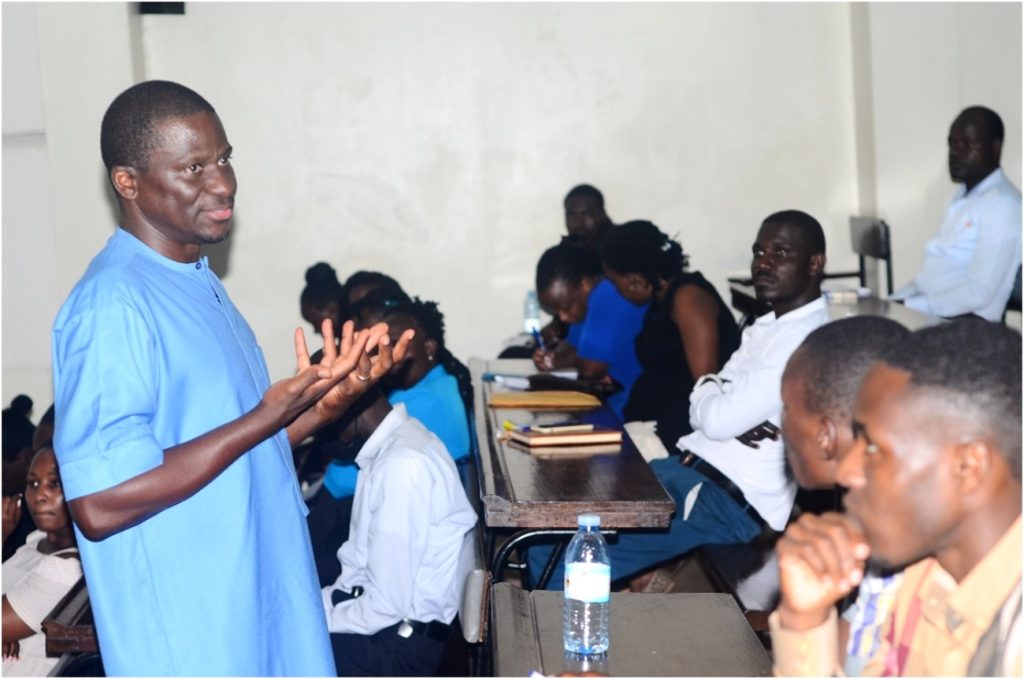
He equally highlighted the need for translation of scientific language into local languages, genetic counsellors and consent in Genetics research adding that community engagement is crucial in building equitable research collaborations and trust between researchers and research communities.
Genetic and Genomics
According to National Institute of General Medical Sciences, Genetics is the scientific study of genes and how certain qualities, conditions or traits are passed from parents to their off springs. Genomics on the other hand involves using information about genes to: identify genetic disorders including future diseases so that doctors tailor treatment for individuals.
In same spirit, Dr. Moses Ochan, the Vice Chairperson of the Makerere University Research and Ethics Committee stressed the importance of sensitization of communities and researchers before any study is undertaken. According to him, sensitization enables communities understand the advantages and disadvantages of participating in a study thus making informed decisions.

In this United States National Institutes of Health funded study that sought to explore the knowledge,perceptions and experiences of stakeholders; researchers, bioethicists, REC members, research participants and caregivers/guardians on the informed consent process, and the ethical, legal and social implication of genomic research, 243 protocols were analyzed involving both local and international researchers
Findings
Return of individual genetic results to research participants
- Of 122 parents/caregivers of adolescents in the study, 77.1 % expressed the desire to receive all results of their children’s genetic/genomic results.
- 71.3 % of parents/caregivers agreed that children should be able to take part in research testing for genetic conditions that begin during childhood, even if there is no treatment that can alter the course of the condition
- 85.3 % of parents/ caregivers expressed the desire to know genetic research results about children to see if they are more likely to get a disease in the future.
- 71.3 % of parents/ caregivers agreed that Children should be able to take part in research testing for genetic conditions for which there is a treatment that begins during childhood that can alter the course of the condition
- 62.3 % of parents/ caregivers agreed that children should be able to take part in research testing for genetic conditions that start in adulthood and have no treatment that can alter the course
- 89.4 % of parents/ caregivers agreed that children should be able to take part in research testing for genetic conditions that will arise in their adult years, only if there is treatment or prevention that should begin in childhood

On the most important issues parents should consider in deciding whether or not to get genetic research results, 81.2% cited distress knowing that there are potential problems for other family members. Additionally, 45.0 % of parents and caregivers noted that receiving their child’s genetic results might worry their family; and 27.8% worried about stigma and discrimination
To address this, 69.2 % of parents and care givers said genetic counselling should be offered prior to a sample being taken to do genetic research
On perceptions on returning individual results of genomic research, parents and caregivers indicated that It is the researchers’ moral obligation to return clinically significant results; as such, genetic results should be communicated to them by the study doctor. Most parents preferred being informed first before involving the children; and some mothers expressed the desire to exclude the child’s father from these discussions until they (mothers) have understood the implications of the results in question.
On the role of children in making decision makings on whether to regarding return of genetic results or not, there was no consensus on the ideal age for disclosure of results. Some parents and caregivers pointed out that involvement of children in these discussions should depend on child’s character, level of understanding and ability to cope with the implications..
On handling findings that have familial implications, there were mixed feelings about involving other family members. Parents, especially mothers expressed fear of attribution. They thus suggested that the biological parents of the child should be the first ones to receive these results and then decide whether to involve other family members.
On the perceived challenges to return of results, parents and caregivers cited protracted delays in communicating genetics/genomics results; difficulty in tracing the child’s family, especially when the parents die and they are being cared for by other caregivers; risks of knowing unpleasant findings and paternity disputes.
Parents and caregivers offered several suggestions for the safe return of results of paediatric genomic research and these included the need to organize peer support and sensitization activities for adolescents participating in genetic studies; feedback of results should be done by a multidisciplinary team comprising of clinicians, genetic counsellors, the child and parents. All concurred that other family members should be involved at a later stage.
Informed consent and sharing of biological samples in collaborative genomic research and biobanking
On consent to future use of samples, 88.8% of the 187 researchers that participated in the study indicated that there is need to provide donors with the option to consent. 62% indicated that informed consent forms should include multiple options regarding the types and conditions of future research for which the samples may be used (tiered consent). 6.2% said that participants should only consent for the current study, and any future studies on the stored samples would require re-consent. However, the majority of researchers felt that the need to reconsent places an unacceptable burden on the researchers (62%) and is prohibitively costly (59.4%)
On informed consent experiences and practices, it was found that most principal investigators (12/15) were not well conversant with the informed consent procedures of their respective studies because they delegate this to study coordinators and nurses/nurse counsellors. Most nurses/nurse counsellors lacked basic knowledge and understanding of genetics, including the risks of genetic research.
On Information disclosure, researchers noted that genetic research is complex and oftentimes research participants do not adequately understand the information disclosed them during the consenting process. They thus recommended the use of an iterative approach that encourages consultation with family and/or people research participants trust, use of simple language, use of visual aids and other media, and objective assessment of comprehension. The also reiterated the need for translating informed consent documents into local languages and the use of peer educators. Researchers emphasized the role of community engagement in community education and sensitization, ensuring that researchers respect local cultural values and beliefs, and dispelling of superstitions and misinformation.
- The perceived challenges to the informed consent process included, the poor quality and inaccuracy of translations of ICF into local languages, inadequate understanding of informed consent, limited understanding of genetics by communities and some research team members, lack of professional genetic counselling services in Uganda, and mistrust of foreign collaborators.
On Export of human biological materials (HBM), researchers had a positive attitude towards the export of samples and expressed a desire for collaborative partnerships in genetics/genomic research and bio banking that are characterized by mutual respect and equity. However, they raised several concerns:
- They seem not to be well conversant with the guidance provided by the national ethics guidelines on bio banking and
- They all concurred that material transfer agreements (MTA) are key in the transfer of human biological materials across the national borders. However, they surmised that these MTA are unfair and tend to favour international Collaborators. They felt that local researchers and research institutions are not empowered enough to bargain favorably during MTA negotiations. They also indicated that the national ethics guidelines are vague on role of RECs in MTA and data sharing agreement development. Furthermore, they indicated that Uganda lacks appropriate enabling ethical and legal frameworks to protect the interests of local scientists and research institutions
- On sharing of the benefits of research, the researchers felt the ground was not leveled and there was neither equity nor fairness in sharing of GBR benefits in international collaborative research. They attributed this to the lack of scientific integrity and questionable research practices by collaborating researchers, lack of effective communication between collaborating partners, denial of access to shared data and samples by Northern collaborators, and felt that the oversight function of UNCST during MTA implementation is limited.
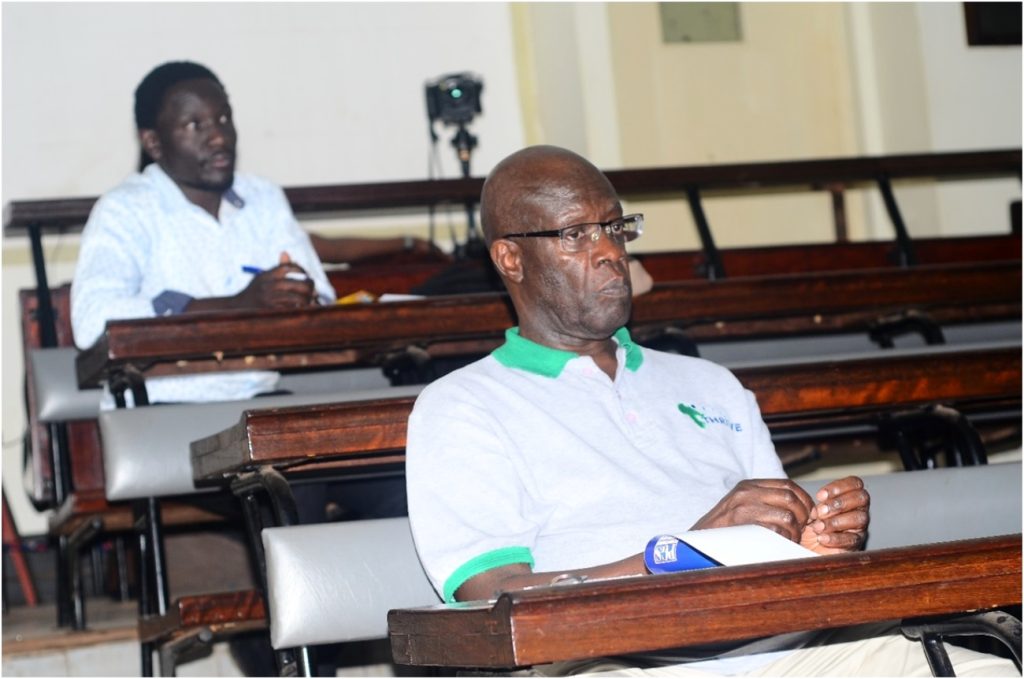
To address the issues at hand around genetics and genomics research, they made the following recommendations;
Recommendations to enhance comprehension of informed consent for genetic/genomic research and biobanking
- Escalating community engagement: to sensitize the general public and educate them on genetics research and its implications
- Iterative approach to informed consent where participants are given ample time to read/be read to consent information, ask questions, make consultations with family and trusted persons
- Encouraging the use of simple language and various media during information disclosure.
- There is need for harmonization of translations. A dictionary of translated key scientific and medical terms/concepts in research and clinical care in local languages should be developed
- Develop specific national guidelines for genetic and genomic research in Uganda.
- Research ethics committees should be trained in the basics of genetic research in order to ensure that they appreciate the ELSI and are competent enough to review genetic research.
- The use of checklists for assessing understanding of consent should become mandatory and should also be included in the national ethics guidelines.
- All stakeholders should read and understand the available national and international guidelines, policies, and regulations pertaining to genetics/genomic research and bio banking before negotiating Material transfer agreements.
- Research ethics committees should be empowered to review and monitor the execution of MTAs during research implementation, and this should be clearly stipulated in the national ethics guidelines.
- The national research regulators and individual institutions should join forces and devise mechanisms for tracking and monitoring the use of exported HBM and data.
- Encouraging meaningful involvement of communities in Material transfer agreements negotiations, particularly regarding sharing of the benefits of research.
- There should be capacity building for clinical genetics, particularly clinical geneticists and professional genetic counsellors
- Community engagement activities should be scaled up to prepare communities for the return of genetic research results as and when they are available
More about the Project
This project explored the knowledge, perceptions and experiences of stakeholders on the informed consent process, and the ethical, legal and social implication of genomic research. The goal of the project was to contribute to a better understanding of the ethical legal and societal issues associated with genomic research in low resource settings. The study employed both quantitative and qualitative methods of data collection and analysis. Prospective evaluation was done using questionnaire surveys; focus group discussions; in-depth interviews; direct observation of informed consent processes; and assessment of the quality of informed consent
This study was funded by United States National Institutes of Health through The Human Heredity and
Health in Africa (H3Africa) initiative which is spearheading bio banking and genomics research in Africa for Africa.
The study was conducted between November 2018 to 2022 by a team of researchers led by Associate Prof. Erisa Mwaka as Principal Investigator.
Research team:
- Associate Prof. Erisa Mwaka
- Dr. Ian Munabi
- Assoc. Prof. Joseph Ochieng
- Dr. Janet Nakigudde
- Prof. Nelson Sewankambo
You may like
-


Breaking the Silence on Digital and Gender-Based Violence: Male Changemakers Lead Makerere University’s Strides for Change
-
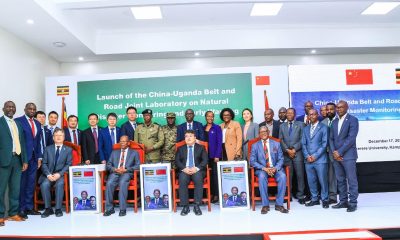

Makerere University and Tsinghua University Launch Landmark China–Uganda Joint Laboratory on Natural Disaster Monitoring and Early Warning
-
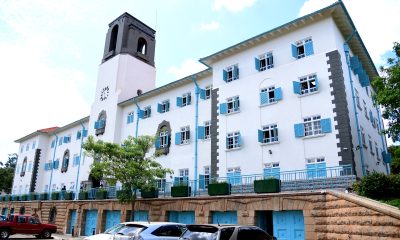

US$ 162m KEXIM Loan Approval Timely for Makerere University
-
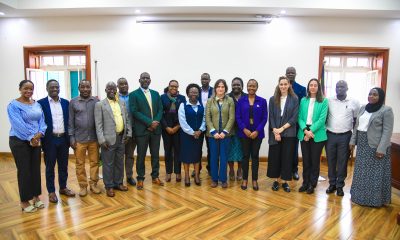

Makerere University Hosts EU Delegation to Review Institutional Engagement in EU Cooperation Programmes
-


College of Humanities and Social Sciences Launches Five Groundbreaking Publications
-


Three Years of Impact: Makerere University Health User Committee Presents Status Report
Health
MakCHS Strengthens Internationalization through Strategic Global Partnerships and Mobility
Published
2 days agoon
December 30, 2025By
Zaam Ssali
Makerere University College of Health Sciences (MakCHS) continues to advance its internationalization agenda by strengthening cross-border partnerships and expanding student and staff mobility in response to global health training needs. Recognizing international collaboration as a cornerstone of contemporary health professional education, the College has established strategic partnerships with leading institutions, including the University of the Western Cape (South Africa), the Medical University of Graz (Austria), and Universitas Syiah Kuala Faculty of Medicine (Indonesia). These collaborations focus on joint research initiatives and the training of dentists and physicians.
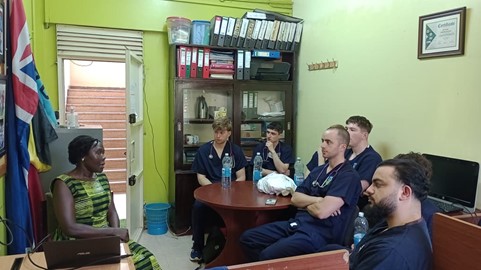
During the period July–September 2025, MakCHS recorded increased inbound student mobility, hosting 86 short-term international students. The majority (73%) came from eight partner institutions, with Europe accounting for 64% of all inbound students. Norway led with students from the University of Bergen and the University of Agder, followed by Italy and the Netherlands. The College also hosted students from Somalia International University, Moi University (Kenya), and institutions in the United States. Most visiting students were medical trainees, with placements mainly in Paediatrics at Mulago National Referral and Teaching Hospital, as well as Emergency Medicine and Obstetrics & Gynaecology at Kawempe National Referral Hospital.
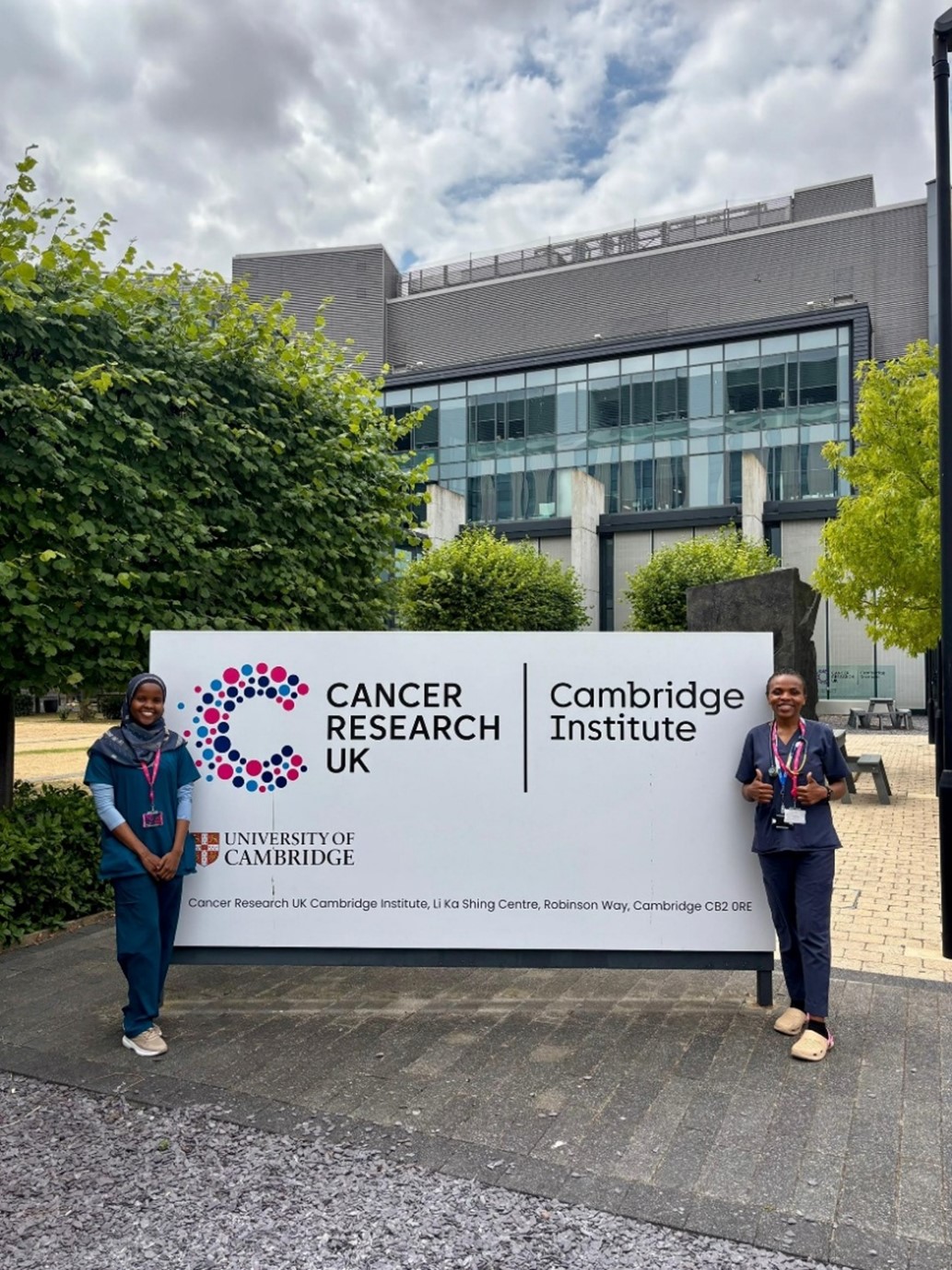
These exchanges demonstrated strong bilateral commitment, notably with the Medical University of Graz, which sent students to MakCHS while simultaneously hosting MakCHS students, even in the absence of Erasmus Mundus Plus funding. Inbound mobility enriched the learning environment through intercultural exchange, inclusiveness, and exposure to diverse clinical and academic perspectives.
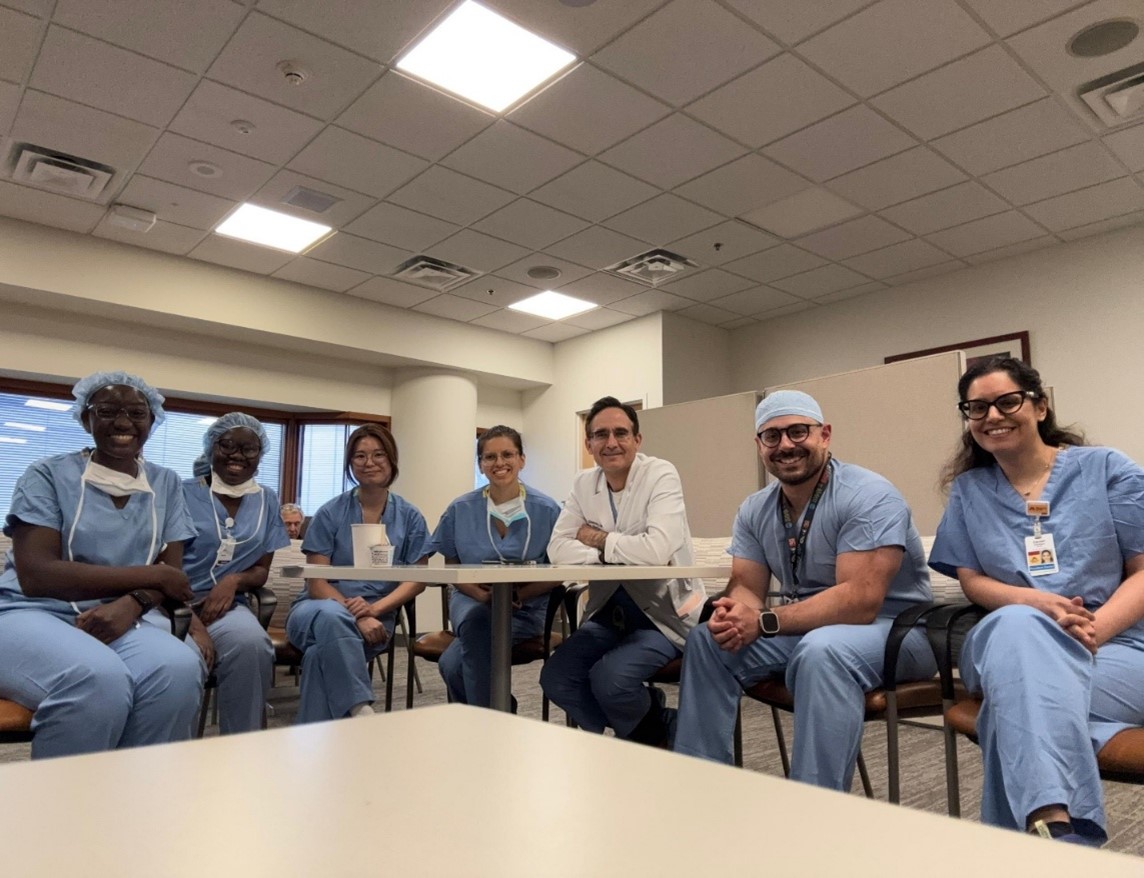
Outbound mobility also expanded significantly. MakCHS students undertook clinical rotations in the United Kingdom, the United States, and Austria. Two students completed hematology and oncology rotations at Addenbrooke’s Hospital, Cambridge, while others trained in plastic and reconstructive surgery at the University of Minnesota Medical Center–Fairview. Additional students undertook highly specialized rotations in paediatric surgery, orthopaedics, neurosurgery, and cardiac surgery at the Medical University of Graz, gaining exposure to advanced, patient-centred healthcare systems and strengthening their global clinical outlook.
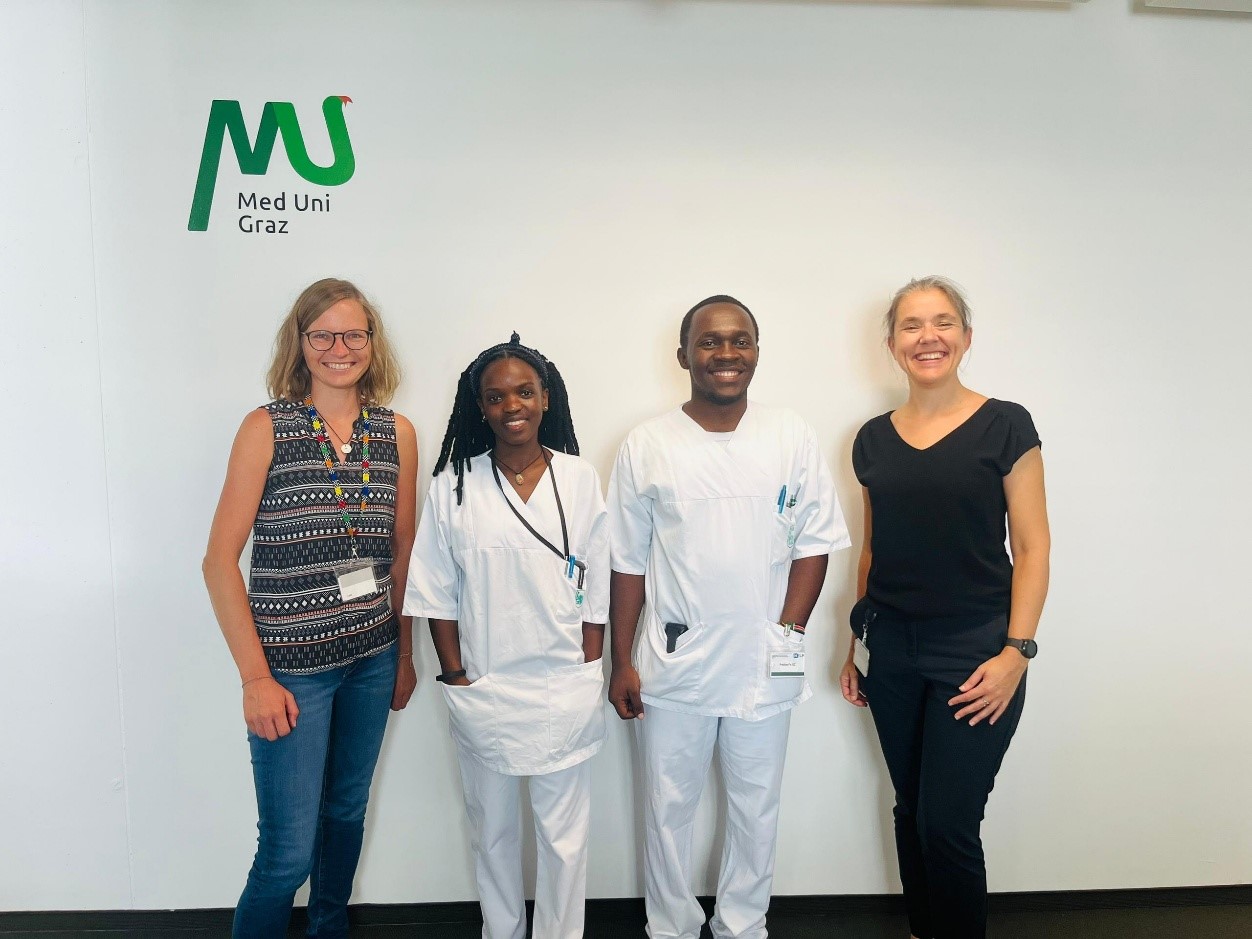
Staff outward mobility was equally notable. Several MakCHS staff and graduate students participated in the Annual Global Health Conference organized by NUVANCE Health, an international partner. MakCHS faculty contributed through presentations, posters, and panel discussions, highlighting research on decolonization in global health education, adolescent health, and global mental health. These engagements provided valuable networking opportunities with global health funders and reinforced the importance of transnational academic partnerships in advancing health equity.
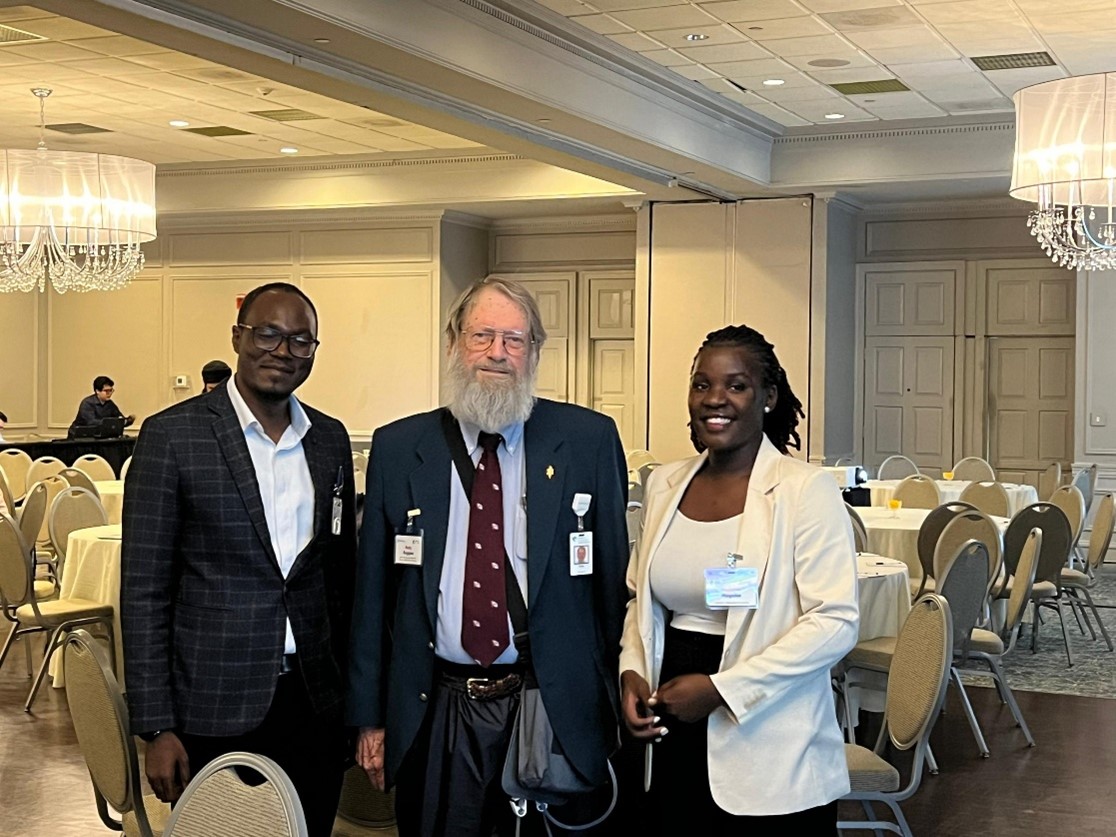
Through sustained partnerships, increased mobility, and active global engagement, MakCHS continues to position itself as a key contributor to global health education, research, and practice.
Health
Makerere University and Tsinghua University Launch Landmark China–Uganda Joint Laboratory on Natural Disaster Monitoring and Early Warning
Published
2 weeks agoon
December 19, 2025
Makerere University has taken a decisive step in strengthening Uganda’s and Africa’s capacity for public safety, disaster preparedness, and climate resilience with the official launch of the China–Uganda Belt and Road Joint Laboratory on Natural Disaster Monitoring and Early Warning, a flagship collaboration with Tsinghua University of China.
Launched during the Makerere University–Tsinghua University Symposium on Public Safety and Natural Disaster Management, the Joint Laboratory positions Makerere as a continental hub for cutting-edge research, innovation, and policy-relevant solutions in disaster risk reduction, early warning systems, and emergency response. The Laboratory will be hosted by Makerere University and is the only facility of its kind in Africa under this cooperation framework, underscoring its regional and global significance.
A Strategic Partnership Rooted in Research, Policy, and Practice
In his opening remarks, Prof. Barnabas Nawangwe, Vice-Chancellor of Makerere University and Ugandan Co-Director of the Joint Laboratory, traced the origins of the partnership to 2018, when a Makerere delegation visited Tsinghua University and the Hefei Institute for Public Safety Research. He recalled being deeply impressed by China’s advanced capacity in public safety research, disaster monitoring, and emergency management capabilities that directly respond to Uganda’s growing exposure to floods, landslides, epidemics, and other hazards.
The Vice-Chancellor noted that the successful establishment of the Joint Laboratory followed a competitive grant process under China’s Belt and Road Initiative, supported by the Government of Uganda and regional partners, including Nigeria and Côte d’Ivoire. He emphasized that the Laboratory aligns squarely with Makerere’s strategic ambition to become a research-led and research-intensive university, while also advancing its internationalisation agenda.

“This Laboratory will significantly enhance Makerere University’s ability to generate evidence-based research that directly informs government policy and public safety interventions. It will serve not only Uganda, but Africa at large,” Prof. Nawangwe said.
He further underscored the Laboratory’s national importance, noting that similar facilities in China are regarded as national-level laboratories, entrusted with supporting government decision-making and national resilience. Relevant Ugandan institutions, including the Office of the Prime Minister (OPM), UPDF, Uganda Police, Ministry of Health, and humanitarian actors, are expected to actively participate in the Laboratory’s work.
Tsinghua University: Advancing Science Diplomacy and South–South Cooperation
Speaking on behalf of Tsinghua University, Prof. Yuan Hongyong, Dean of the Hefei Institute for Public Safety Research and Chinese Co-Director of the Joint Laboratory, described the initiative as both a scientific milestone and a powerful demonstration of South–South cooperation.
He emphasized that natural disasters transcend national borders and demand collective, science-driven responses. By combining Tsinghua’s technological expertise, including satellite monitoring, AI-driven analytics, and integrated early warning systems, with Makerere’s deep regional knowledge and policy engagement, the Joint Laboratory provides a robust platform for innovation, applied research, and practical solutions tailored to African contexts.

The Laboratory will function not only as a research centre, but also as an operational platform for natural hazard monitoring, early warning, risk assessment, and capacity building, supporting Uganda and the wider African region in building more resilient communities.
Government of Uganda: Research as a Pillar of National Resilience
Representing the Office of the Prime Minister, Mr Frederick Edward Walugemba, reaffirmed the government’s strong support for the Joint Laboratory, recognizing research as a cornerstone of effective public safety and disaster management. The OPM highlighted its constitutional mandate to coordinate disaster preparedness and response through institutions such as the National Emergency Coordination and Operations Centre (NECOC).
He mentioned that the Office of the Prime Minister is committed to working closely with Makerere University and its partners, underscoring the importance of multi-agency collaboration, robust data systems, and timely policy advisories to address the complex, multidimensional nature of public safety challenges.
China–Uganda Relations and the Role of Science Diplomacy
Mr. WANG Jianxun, Commercial Counsellor of the Embassy of the People’s Republic of China in Uganda, lauded the Joint Laboratory as a concrete outcome of the growing China–Uganda Comprehensive Strategic Partnership. He emphasized that the collaboration reflects China’s commitment to knowledge sharing, technology transfer, and people-centred development, particularly in areas such as climate adaptation, disaster risk reduction, and sustainable development.
He also highlighted the Belt and Road Initiative as a framework that extends beyond infrastructure to include scientific cooperation, academic exchange, and innovation-driven development, with the Joint Laboratory standing as a model of how universities can advance diplomacy through science.
Makerere’s Multidisciplinary Strength at the Core
In his concluding remarks, Prof. Nawangwe reaffirmed Makerere University’s readiness to operationalize the Laboratory through a multidisciplinary research team spanning public health, geography, engineering, computing, artificial intelligence, social sciences, and the built environment.
He stressed that effective disaster management must integrate technology, human behaviour, governance, and community engagement, noting the importance of sociological insights in addressing risk perception and public compliance during disasters. Makerere will also engage emerging universities and regional partners to ensure the Laboratory’s benefits are widely shared.
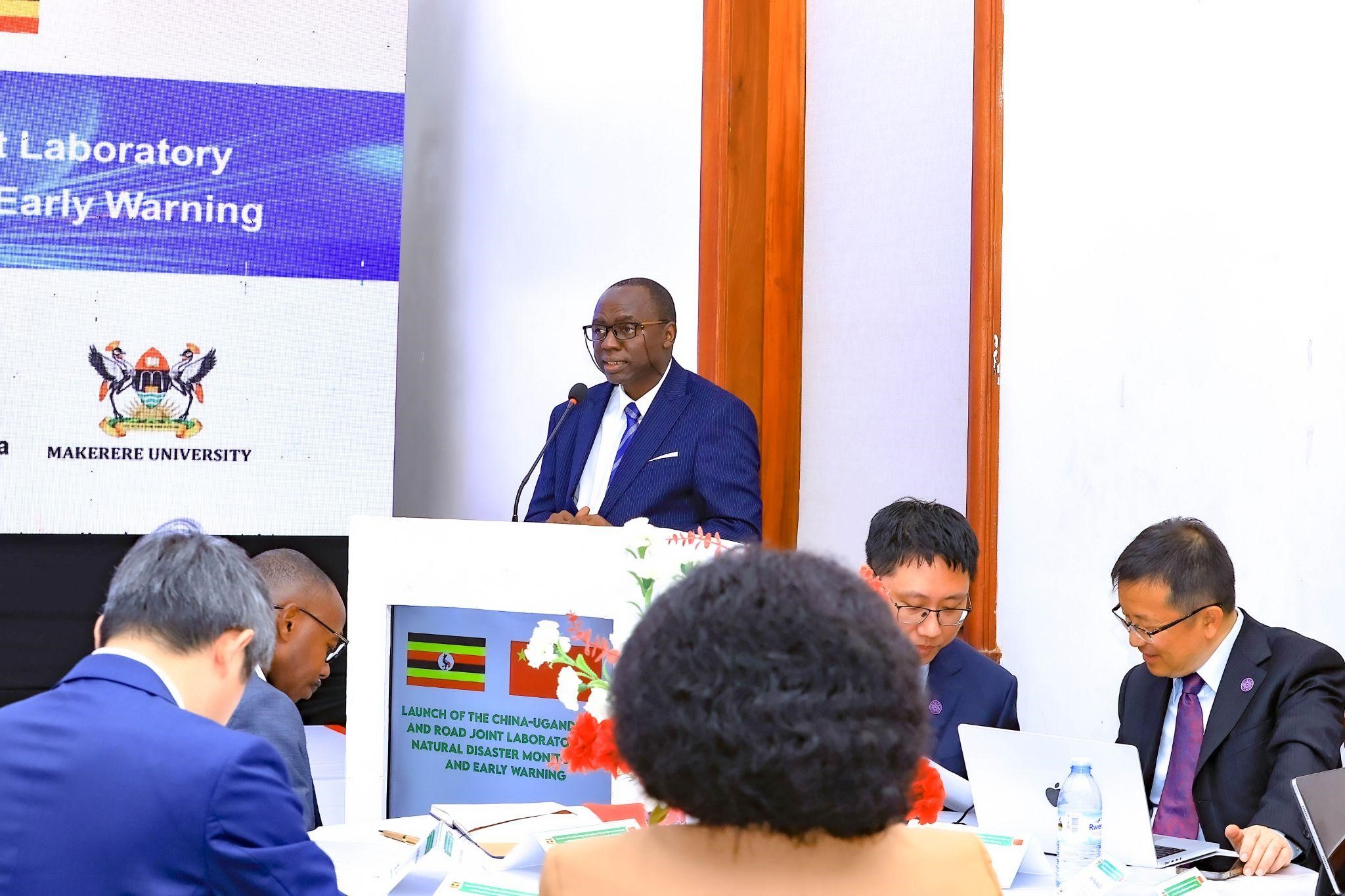
The Vice-Chancellor also commissioned an interim, multidisciplinary coordination committee to operationalise the Joint Laboratory, drawing expertise from health, climate science, engineering, artificial intelligence, social sciences, and government agencies.
Hon. John Chrysostom Muyingo Officially Launches the Laboratory
The Joint Laboratory was officially launched by the Honourable John Chrysostom Muyingo, Minister of State for Higher Education, who applauded Makerere University and Tsinghua University for securing the prestigious grant and advancing Uganda’s science and research agenda.

Hon. Muyingo reaffirmed the Government’s commitment to supporting research that informs national development, public safety, and disaster preparedness. He urged Ugandan researchers to fully leverage the partnership to learn from China’s experience in transforming research into actionable solutions for society.
“This Laboratory is a clear demonstration of how strategic international partnerships can strengthen national capacity, inform policy, and protect lives,” the Minister said, as he formally declared the symposium and laboratory launch open.
Positioning Makerere as a Regional Centre of Excellence
Makerere University already plays a critical role in public safety, disaster preparedness, and early warning through a range of research, training, and operational partnerships. Through the School of Public Health (MakSPH) and the Infectious Diseases Institute (IDI), the University has led national and regional initiatives in epidemic preparedness, emergency response, and early warning, including Field Epidemiology Training, risk prediction modelling, and multi-hazard risk assessments that inform district and national preparedness planning. A national assessment of 716 health facilities conducted by MakSPH revealed widespread exposure to climate-related hazards and systemic preparedness gaps, directly informing the Ministry of Health’s Climate and Health National Adaptation Plan (H-NAP 2025–2030)
Makerere has also been at the forefront of disaster risk reduction innovation and community resilience through the Resilient Africa Network (RAN), which has supported scalable, evidence-based solutions such as EpiTent, a rapidly deployable emergency health facility; RootIO, a community-based radio communication platform used for risk communication and early warning; and RIAP Horn of Africa, which advances climate-resilient water harvesting technologies for drought-prone pastoralist communities.

Earlier, the University led the USAID-funded PeriPeri U project (2014–2019) and a disaster management collaboration with Tulane University, strengthening applied research, training, and early warning systems across Africa, efforts that laid the foundation for RAN and Makerere’s current disaster resilience agenda.
In collaboration with government and international partners, Makerere has supported the strengthening of Emergency Operations Centres, including the development of Regional Emergency Operations Centre (REOC) dashboards to improve real-time coordination and situational awareness. IDI has further contributed to epidemic intelligence and early warning, supporting districts to update WHO STAR-based risk calendars, strengthen sub-national preparedness, and enhance real-time decision-making during outbreaks. Makerere teams have also been deployed regionally to support Marburg and Mpox outbreak responses in Rwanda and the DRC, while advancing outbreak modelling as an early warning tool for high-consequence infectious diseases.
Complementing these efforts, the Department of Geography, Geo-Informatics and Climatic Sciences conducts transdisciplinary research on floods, landslides, droughts, soil erosion, and land-use change, using geospatial analysis, earth observation, modelling, and participatory methods to translate complex data into actionable early warning and risk information for policymakers and communities. These ongoing initiatives collectively demonstrate Makerere University’s established capacity in public safety, disaster preparedness, and early warning, providing a strong operational and scientific foundation for the China–Uganda Belt and Road Joint Laboratory.
With strong backing from the Governments of Uganda and China, as well as leading international partners, the China–Uganda Belt and Road Joint Laboratory on Natural Disaster Monitoring and Early Warning is poised to become a regional centre of excellence for disaster risk reduction research, training, and innovation.
The Laboratory will contribute to improved early warning systems, faster emergency response, stronger policy coordination, and enhanced scientific capacity, cementing Makerere University’s role at the forefront of addressing some of the most pressing public safety challenges facing Uganda, Africa, and the global community.
Caroline Kainomugisha is the Communications Officer, Advancement Office Makerere University.
Health
Makerere University Explores Strategic Partnership with Tsinghua University in Safety Science, Disaster Resilience and Public Health
Published
2 weeks agoon
December 16, 2025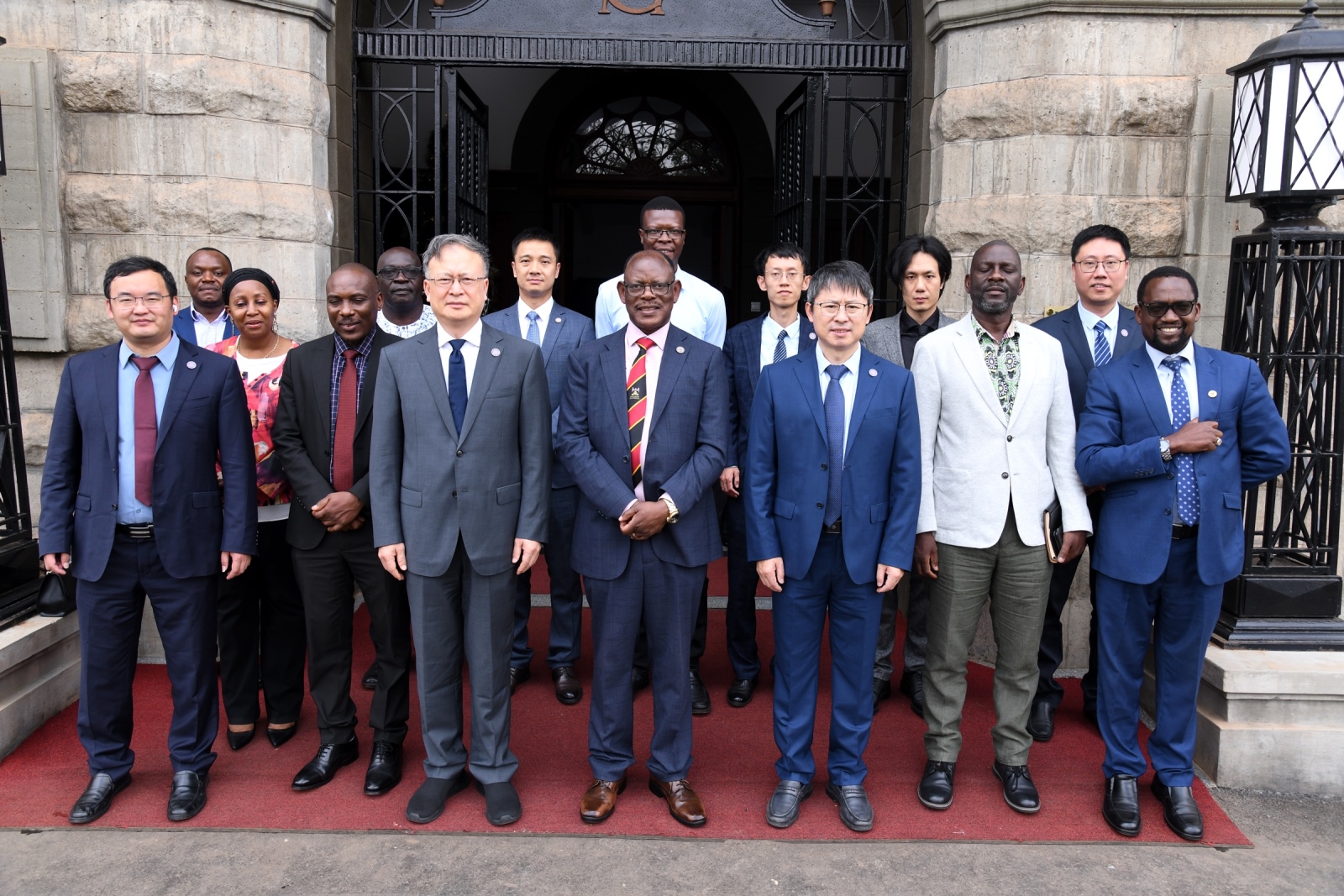
Makerere University has taken a significant step toward strengthening global research collaboration following a high-level meeting between Vice Chancellor Prof. Barnabas Nawangwe and a delegation from Tsinghua University’s Hefei Institute for Public Safety Research, one of China’s leading centres of excellence in disaster prevention, public safety, and emergency management. The engagement marked a renewed commitment to advancing scientific cooperation between the two institutions, particularly in addressing complex environmental and public health challenges that continue to shape national and global development.
A Partnership Anchored in Shared Challenges and Global Priorities
In his remarks, Prof. Nawangwe emphasized that the concept of comprehensive public safety, spanning natural disasters, epidemics, infrastructure failures, and social risks, is increasingly relevant to all colleges and disciplines at Makerere. Uganda’s experience with epidemics such as Ebola, cholera, and COVID-19; frequent landslides in mountainous regions; flooding events; and rising traffic-related incidents place the University in a unique position to contribute applied research, community-based insights, and local knowledge to a global scientific dialogue.
He noted that the Tsinghua presentation revealed new areas of alignment, particularly in epidemic modelling, early-warning systems, and integrated emergency management, areas where Makerere’s public health scientists, medical researchers, and social scientists have extensive expertise.
“This collaboration offers meaningful opportunities for nearly every college at Makerere,” he noted. “Public safety touches the environment, public health, engineering, social sciences, ICT, humanities, and urban planning. The challenges we face as a country make this partnership both timely and essential.” Prof. Barnabas Nawangwe noted.
Tsinghua University: A Global Leader in Comprehensive Public Safety.
The delegation from Tsinghua University outlined China’s national investment in Public safety over the past two decades, an effort driven by the recognition that life and security are the foundation of sustainable development. Tsinghua’s Hefei Institute for Public Safety Research has developed nationally recognised research platforms and large-scale simulation facilities dedicated to Natural disaster modelling (earthquakes, landslides, floods, typhoons, Infrastructure and urban systems safety, Public health emergencies and epidemic preparedness, Early-warning, monitoring, and emergency communication, Traffic and transportation safety, Post-disaster reconstruction and resilience planning.
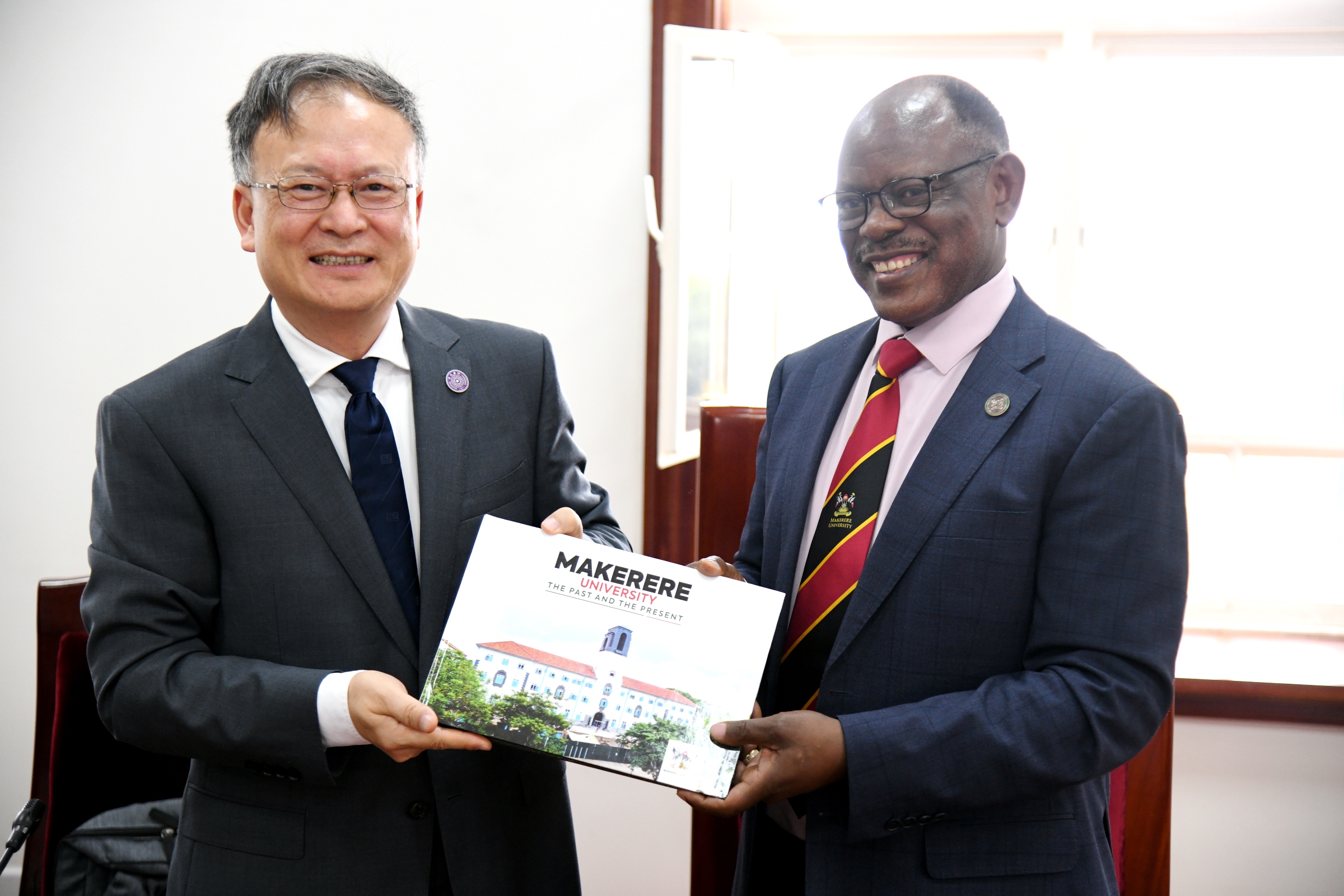
Their systems currently support over 100 provincial and municipal emergency management centres in China, underscoring their global leadership in practical, scalable solutions for disaster risk management. The delegation reaffirmed that Uganda’s lived experience with multiple hazards presents opportunities for meaningful knowledge exchange. They expressed particular interest in learning from Makerere’s work on epidemic response, community health systems, and the social dimensions of disaster management.
Emerging Areas of Partnership
The meeting identified several promising pathways for long-term collaboration:
1. Joint Research in Disaster Risk Reduction and Climate-Related Hazards
Both institutions expressed readiness to co-develop research projects on landslides, floods, urban resilience, and multi-hazard modelling, drawing on Tsinghua’s advanced simulation technologies and Makerere’s environmental expertise and geographic field realities.
2. Public Health Emergency Preparedness and Epidemic Response
Makerere’s renowned public health schools and research centres will collaborate with Tsinghua on epidemic prediction, early-warning systems, and integrated preparedness frameworks, leveraging Uganda’s decades of experience managing high-risk disease outbreaks.
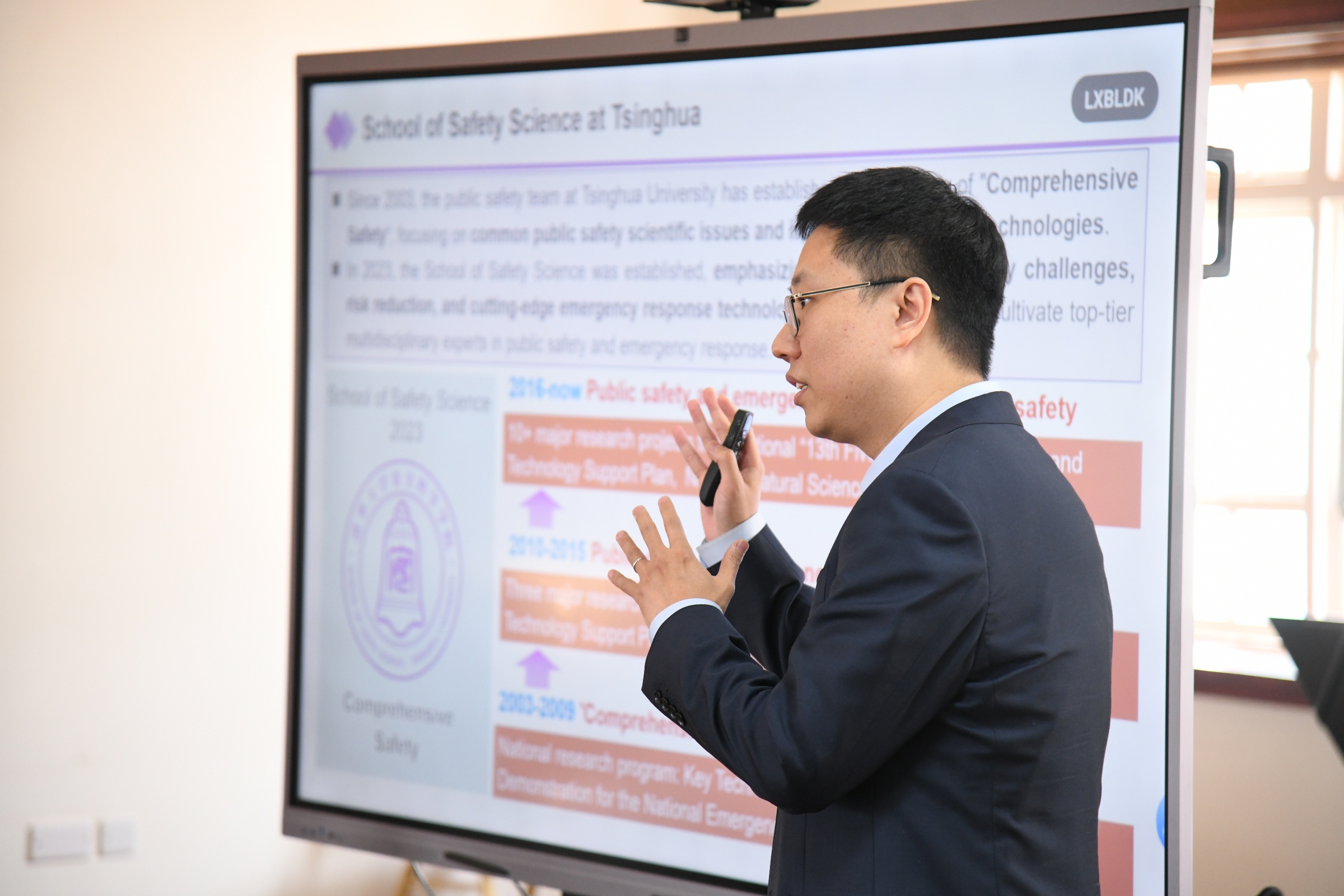
3. Infrastructure and Urban Safety, Including Traffic Systems
With Uganda experiencing rapid urbanisation and high rates of motorcycle-related road incidents, Tsinghua shared insights from China’s own transformation, including infrastructure redesign, transport modelling, and public transit innovations. Collaborative work in this area would support city planning and road safety interventions in Kampala and other urban centres.
4. Academic Exchange and Capacity Building
Both sides expressed interest in student exchanges, staff mobility, co-supervision of postgraduate research, and specialised training programmes hosted at Tsinghua’s world-class safety research facilities.
5. Development of a Joint Public Safety Laboratory at Makerere
The institutions are exploring the establishment of a collaborative safety research platform in Uganda. This initiative could serve as a regional hub for innovation in emergency management, environmental safety, and technology-driven risk assessment.
Towards a Long-Term, Impactful Collaboration
The meeting concluded with a shared commitment to develop a structured partnership framework in the coming months, supported by both universities and aligned with Uganda–China cooperation priorities. Both teams acknowledged that the partnership must yield tangible results that enhance community resilience, bolster national preparedness systems, and foster scientific capacity for future generations.
Prof. Nawangwe commended Tsinghua University for its willingness to co-invest in research and capacity building, noting that such collaborations position Makerere not only as a leading research institution in Africa but as an active contributor to global scientific progress.

“This partnership has the potential to transform our understanding of the science of public safety to deliver solutions that safeguard lives.” Prof. Barnabas Nawangwe noted.
“It aligns perfectly with Makerere’s mission to be a research-led, innovation-driven university responding to the world’s most urgent challenges.” He added.
As part of this strategic partnership engagement, Makerere University will, on Wednesday, 17th December, co-host the Makerere University–Tsinghua University Symposium on Public Safety and Natural Disaster Management. The symposium will run from 8:00 AM to 2:00 PM in the University Main Hall, Main Building.
This symposium represents a deepening of collaboration not only between Makerere University and Tsinghua University, but also a broader strategic partnership between Uganda and the People’s Republic of China.
During the event, H.E. Zhang Lizhong, Ambassador of the People’s Republic of China to Uganda, together with the State Minister for Higher Education, Government of Uganda, will officially launch the China–Uganda Belt and Road Joint Laboratory on Natural Disaster Monitoring and Early Warning. The Laboratory will be hosted at Makerere University, positioning the University to play a central role in strengthening Uganda’s and the region’s capacity for natural disaster preparedness, public safety, and emergency management research.
Caroline Kainomugisha is the Communications Officer, Advancement Office, Makerere University.
Trending
-

 Research2 weeks ago
Research2 weeks agoMakerere University Launches Knowledge-Sharing Platform to Drive Innovation and Economic Growth
-
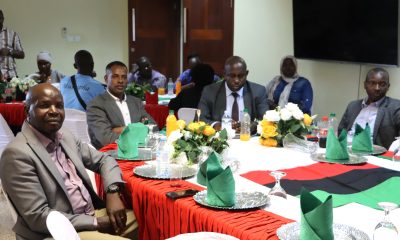
 Business & Management2 weeks ago
Business & Management2 weeks agoEfD Uganda Marks 2025 Milestones, Sets Strategic Path for 2025–2029
-

 Health2 weeks ago
Health2 weeks agoMakerere University and Tsinghua University Launch Landmark China–Uganda Joint Laboratory on Natural Disaster Monitoring and Early Warning
-
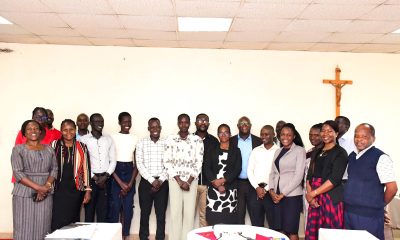
 Education2 weeks ago
Education2 weeks agoFacilitating Access and Participation through Higher Education Access Programmes and Connected Education for Students with Refugee Backgrounds: A Global South Delphi Study
-

 Business & Management2 weeks ago
Business & Management2 weeks agoMakerere University CoBAMS Staff celebrate 2025 achievements
